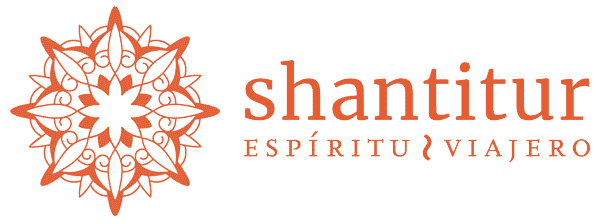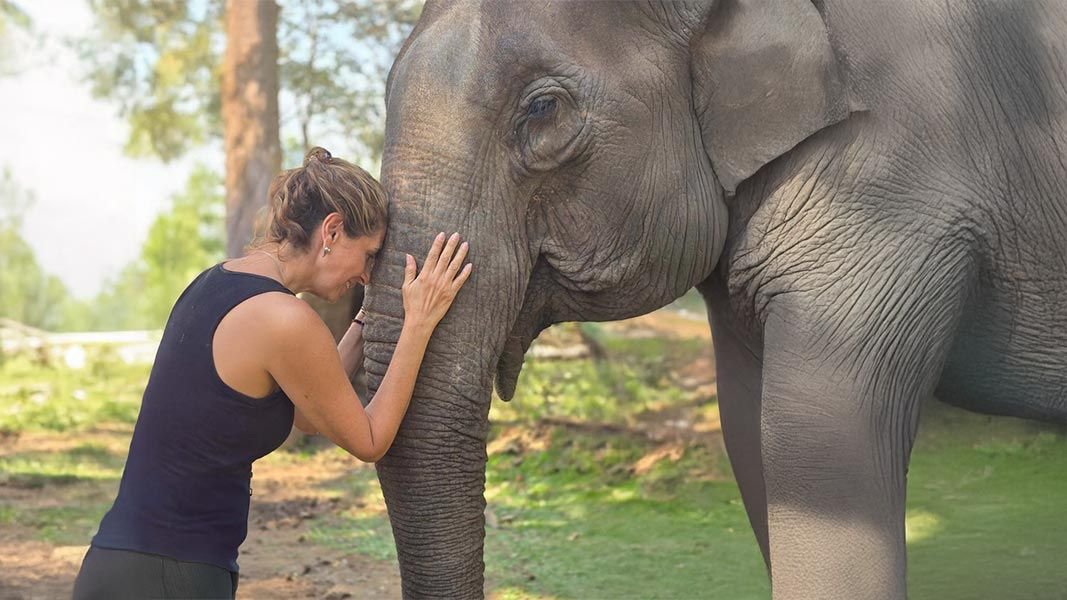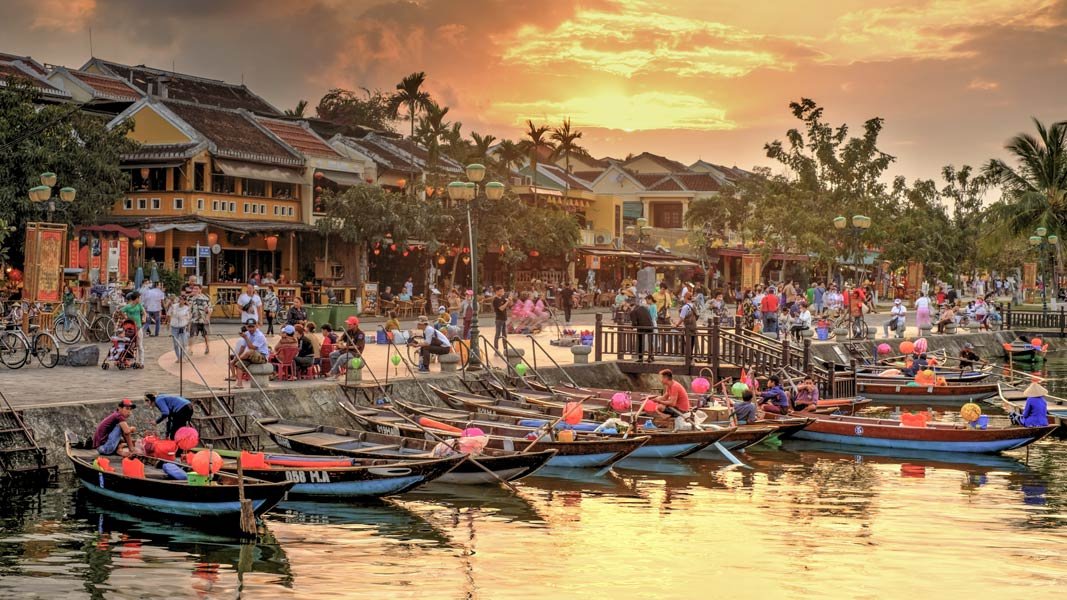Overview
Vietnam, situated in the heart of Southeast Asia, is a country that seamlessly blends ancient traditions with modern dynamism. Known for its rich history, which spans from imperial dynasties to recent conflicts, Vietnam captivates travelers with its cultural heritage and resilient spirit. Visitors are drawn to its diverse landscapes—from the bustling urban centers of Hanoi and Ho Chi Minh City to the peaceful rice terraces of Sapa, the limestone karsts of Halong Bay, and the charming ancient town of Hoi An with its lantern-lit streets and rich cultural heritage.
Along the coast, beautiful beaches such as Da Nang and Nha Trang offer a balanced merge of city and relax, while the Mekong Delta reveals the country’s agricultural heart, where floating markets and riverside villages provide a glimpse into rural life. Whether you’re exploring ancient temples, savoring the world-renowned cuisine, or simply enjoying the warmth and hospitality of its people, Vietnam offers an extraordinary journey for all who visit.
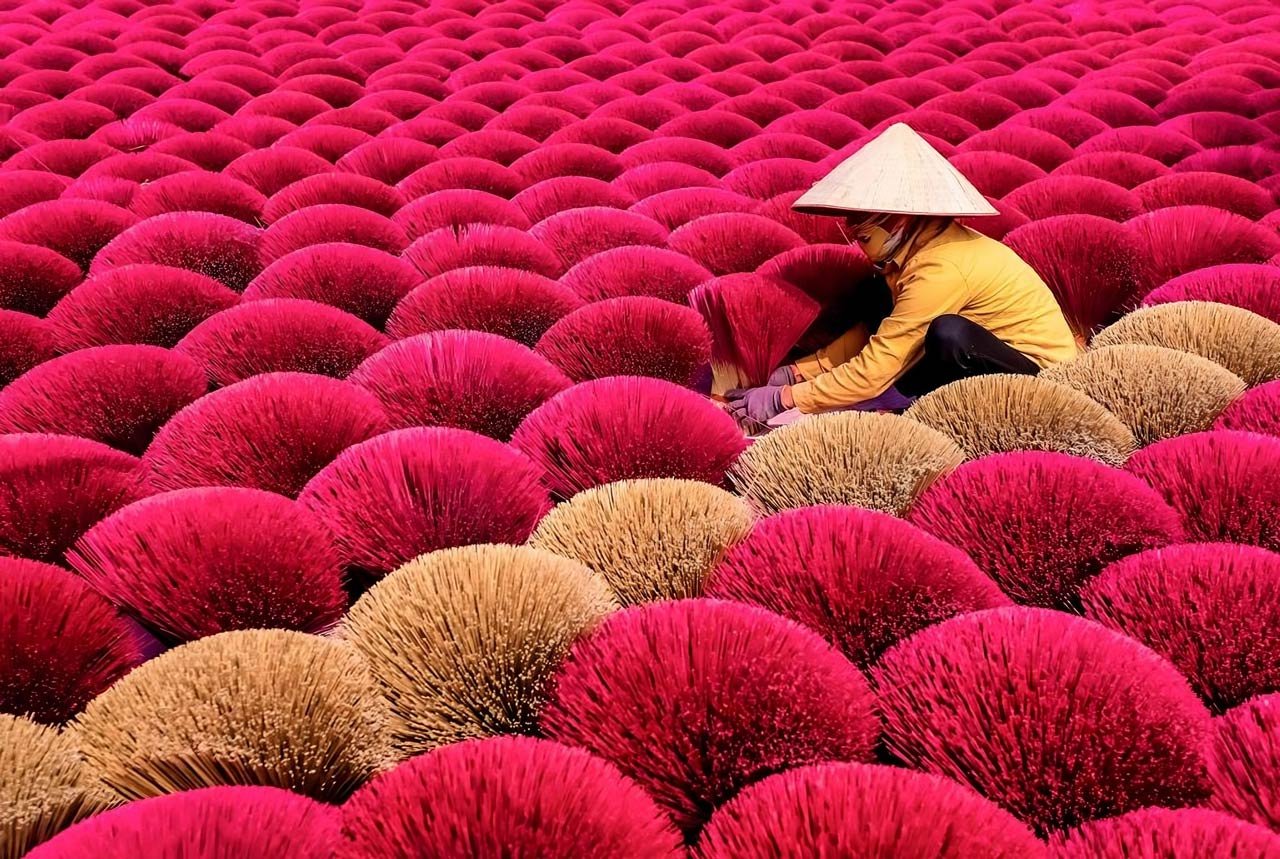
Country
Vietnam
Visa Requirements
Visa requirements for Vietnam vary depending on your nationality and the purpose of your visit. Some travelers may be eligible for visa exemptions, while others may require a visa in advance. It's advisable to check the specific requirements based on your nationality before planning your trip.
Languages spoken
The official language of Vietnam is Vietnamese. While Vietnamese is the primary language, English is widely understood and spoken, especially in tourist areas and larger cities.
Currency used
The official currency of Vietnam is the Vietnamese Dong (VND). While the Dong is the local currency, US Dollars and Euros are widely accepted in tourist areas, and it's advisable to carry a mix of currencies for convenience.
Area (km2)
Vietnam covers an area of approximately 331,212 square kilometers, making it the 65th largest country in the world by land area.
Map
Travel Tips
- Cultural Sensitivity: When visiting temples or sacred sites, dress modestly by covering your shoulders and knees, and always remove your shoes before entering. It's also customary to avoid pointing your feet towards religious statues or people when seated, as it's considered disrespectful. Always ask for permission before taking photos inside temples.
- Local Transportation: Vietnam has a variety of transportation options, including buses, taxis, cyclos (cycle rickshaws), and motorbike taxis. In major cities like Hanoi and Ho Chi Minh City, ride-hailing services are also available. Buy a sim card and use Grab application to request a motorbike or a car to take you around. Prices are lower than most countries.
- Street Food: Vietnam is renowned for its vibrant street food scene, where you can try dishes like pho, banh mi, and bun cha. Be adventurous but choose vendors that are busy, as this often indicates higher food turnover and better hygiene.
- Health Precautions: Consult a healthcare professional for vaccinations and health advice before traveling. Be cautious with street food to avoid foodborne illnesses.
Carry mosquito repellent, especially when visiting rural areas, as dengue and malaria can be present in certain regions.
Unlike some other countries in South East Asia, Vietnam does not require Yellow fever certificate. - Visa Application: "Apply for your visa through the official website: Many websites offer online visas, but be cautious as some may not be trustworthy."
- Timing for Visa Application: "Apply for your visa at least 3 weeks in advance: While visas can sometimes be processed in just 2-3 days, issues such as the rejection of uploaded photos (which must be 4x6 inches with a white background) can delay the process. Additionally, public holidays may further extend the processing time, so applying early will save you unnecessary stress."
- Immaculate Currency: "Only bring pristine US dollars or Euros: The bills should look freshly printed. Notes that are torn, old (from before 2006), or marked may be subject to a 10-20% decrease in exchange value."
- Best Places to Exchange Money: "The best rates are usually found at gold shops. Even at airport exchange counters, you can negotiate for a better rate!"
Highlights
NORTERN VIETNAM
- Hanoi: The capital of Vietnam blends French colonial architecture with traditional Vietnamese culture. Explore the Old Quarter with its narrow streets, vibrant markets, and street food vendors. Some of the highlights are Ho Chi Minh Mausoleum, the Temple of Literature, and the serene Hoan Kiem Lake.
- Sapa: Nestled in the northern mountains, Sapa is famous for its terraced rice fields and the ethnic minority communities who live there, including the Hmong and Dao people. Trekking is a must, with routes that take you through lush valleys and picturesque villages. The cool climate makes it an ideal retreat from the heat of the lowlands.
- Halong Bay: A UNESCO World Heritage Site, Halong Bay is celebrated for its emerald-green waters and the thousands of limestone karsts and islands dotting the landscape. Take a boat cruise to explore hidden caves and floating fishing villages, or kayak to get up close to this natural wonder.
CENTRAL VIETNAM
- Hue: Once the imperial capital, Hue is known for its historical significance and stunning architecture. Visit the Imperial City, a sprawling complex of palaces, temples, and gates. The Perfume River and the Thien Mu Pagoda add to the tranquil charm of this ancient city.
- Da Nang: A coastal city known for its long sandy beaches and the Marble Mountains, Da Nang is a growing hub for both culture and tourism. The Golden Bridge, held by two giant stone hands, offers breathtaking views of the surrounding mountains, while the Dragon Bridge lights up the night with a dazzling display.
- Hoi An: A UNESCO World Heritage Site, Hoi An is a beautifully preserved ancient town known for its historic architecture, tailors, and vibrant night market. Wander through the lantern-lit streets, visit old Chinese temples, and cross the famous Japanese Covered Bridge. Hoi An is also a gateway to beautiful nearby beaches.
SOUTHERN VIETNAM
- Ho Chi Minh City: Vietnam’s largest city, also known as Saigon, serves as the country’s economic hub. It offers a blend of history and modernity, with attractions like the War Remnants Museum and the Reunification Palace. Visitors can explore bustling markets like Ben Thanh and enjoy a vibrant nightlife. While the majority of Vietnam is considered very safe, it’s worth noting that both Ho Chi Minh City and Hanoi have higher crime rates compared to other regions, so a bit more caution is advised when visiting these cities.
- Phu Quoc: Vietnam’s largest island, Phu Quoc, is known for its stunning beaches, clear waters, and lush jungles. It’s a haven for snorkeling and diving, with coral reefs and tropical marine life. The island also offers luxury resorts, vibrant night markets, and the famous Phu Quoc fish sauce.
Responsible Travel Practices
- Support Local Economy: When traveling, make an effort to purchase goods from local markets and artisans. This not only provides you with authentic souvenirs but also supports the community’s economy and helps sustain local livelihoods. Engaging with local businesses enriches your travel experience and fosters cultural exchange.
- Respect for Nature: Vietnam is home to stunning natural landscapes, particularly in ecologically sensitive areas such as national parks and coastal regions. Be mindful of your environmental impact by avoiding littering, using biodegradable products, and following designated paths when hiking or exploring. Protecting these environments ensures they remain beautiful for future generations.
- Wildlife Conservation: When participating in wildlife experiences, choose options that prioritize animal welfare and conservation. Avoid activities that exploit animals for entertainment, and instead, support ethical tours that promote wildlife preservation and education. This helps protect Vietnam’s diverse ecosystems and the creatures that inhabit them.
- Cultural Sensitivity: Familiarize yourself with local customs and traditions to enhance your travel experience. Show respect by seeking permission before taking photographs, especially in rural areas where people may have specific cultural beliefs about being photographed. Being aware of and sensitive to local practices demonstrates respect for the community and fosters goodwill between travelers and locals.
Travel Recommendations
- Driving Motorbikes: Do not drive motorbikes unless you're an experienced rider, especially if you haven’t lived in a country with chaotic traffic (where, for example, people might drive the wrong way on a two-way street without even looking ahead!). Driving motorbikes in Vietnam is risky. Instead, use the Grab app to book a ride with a local driver, which is both affordable and convenient (USD 0.50–2, depending on the distance).
- Discussing Politics: Avoid openly discussing politics: If you have political opinions, be mindful of whom you share them with. Criticism of the government is frowned upon, and it may lead to fines or a visit to the police station.
- Bargaining at Markets: Bargaining is common in Vietnam, especially at markets and with street vendors. Start by offering around 50-70% of the quoted price, and negotiate with a smile. However, avoid bargaining in restaurants or shops with fixed prices.
Local Cuisine

Pho
A fragrant noodle soup with a choice of beef or chicken, often enjoyed with fresh herbs and lime.

Cau Lau
Unique Hoi An noodles with pork and fresh herbs. A regional specialty not found elsewhere.

Goi Cuon
Fresh spring rolls filled with shrimp, herbs, vermicelli noodles, and sometimes pork, wrapped in rice paper.

Bun Cha
Grilled pork served with rice noodles, fresh herbs, and a flavorful dipping sauce.
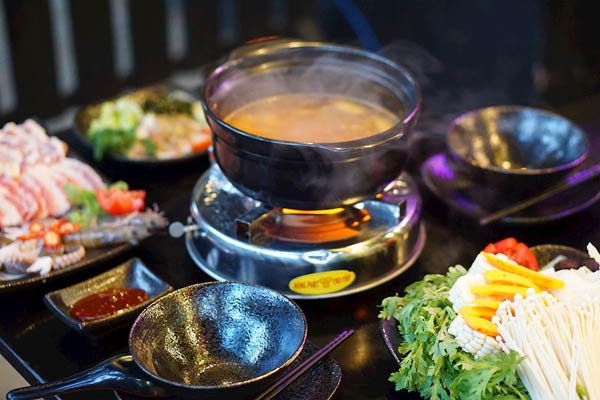
Hot Pot
A shared meal where diners cook meats, seafood, and vegetables in a simmering broth at the table. It's a warm, interactive, and flavorful experience.
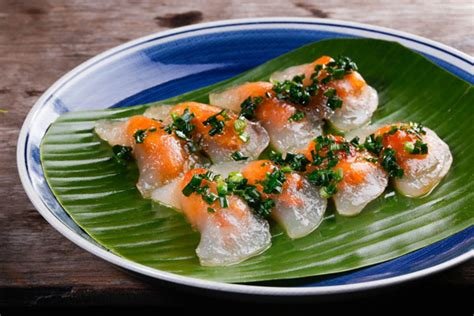
Banh Bot Loc
Banh Bot Loc are chewy tapioca dumplings filled with shrimp and pork, typically served with fish sauce. A central Vietnamese delicacy.
You may like
Discover the Most Suitable Trip for You!

